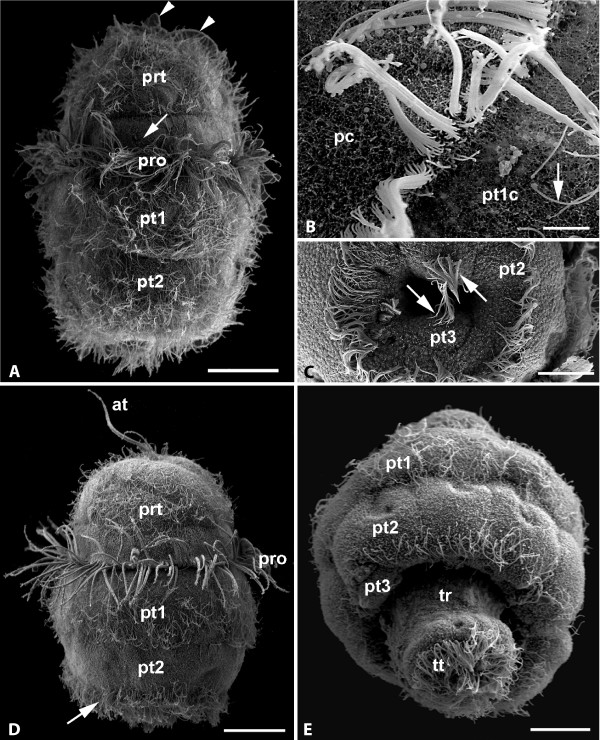Figure 2.
Wirenia argentea larvae, day 1-3 after hatching, SEM micrographs. A. Newly hatched larva, apical cap covered by a single row of prototrochal cells bearing compound prototroch cilia (pro), two rows of posttrochal cells (pt1, pt2), and pretrochal cells (prt). The compound cilia of the apical tuft (at) are bent. Note the cilia-free surface above the prototrochal ciliary band and the dense ciliation of the posttrochal cell rows (arrow), scale bar 30 μm; B. Detail of prototroch with compound prototroch cilia on the posterior margin of the prototroch cells (pc). Note scattered cilia (arrow) on the adjacent posttrochal cells (pt1c), scale bar 4 μm; C. Detail of pseudo-blastopore, seen from below, showing the second row of posttrochal cells (pt2) and the two posteriormost test cells (pt3) bearing tufts of cilia (arrows), scale bar 15 μm; D. Day 2 larva with long apical tuft (at) and conspicuous prototroch cilia (pro). Pretrochal cells (prt) and first row of posttrochal cells densely ciliated, second row of posttrochal cells with a posterior ciliary band (arrow); scale bar 30 μm; E. Day 3 larva in oblique adapical view with trunk (tr) and telotroch (tt) protruding from larval test; pt1-pt3: posttrochal cell rows 1-3, scale bar 20 μm.

